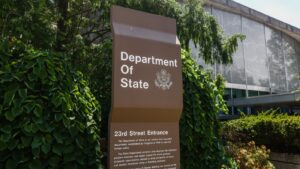
U.S. children born after Dec. 31, 2024, and through the end of 2028 will be eligible for Trump Accounts, seeded by $1,000 in federal funds. Families can add up to $5,000 each year until the year a child turns 18.
Virojt Changyencham/Getty Images
Virojt Changyencham/Getty Images
In a groundbreaking move, the U.S. government is set to introduce “Trump Accounts,” a financial initiative aimed at children born in the next few years. Each eligible child will receive a $1,000 account, a part of President Trump’s recent legislative package that revamps tax and spending frameworks.
These accounts are designed to mature alongside the child, with the initial $1,000 invested in low-cost stock funds. The intention is for this money to grow through compound interest until the child reaches adulthood.
According to the White House, the goal is to provide children “the opportunity to benefit from compounded growth,” setting them on a path to future prosperity.
This initiative has raised numerous questions about its implementation, its comparative advantages, and its potential influence on economic disparities in America.
Financial consultant Michael Reynolds from Elevation Financial states, “I’m going to take the thousand dollars, definitely. Nothing wrong with that.”
Eligibility Criteria
The program is open to U.S. citizens born between Jan. 1, 2025, and Dec. 31, 2028, who must have a Social Security number. The accounts will be initiated with a $1,000 government contribution and are tied to U.S. stock index investments.
At age 18, the funds will be accessible to the account holder. While parents can establish accounts for children outside this timeframe, those accounts won’t include the government seed money.
Contribution Guidelines
Family members and others may contribute up to $5,000 annually until the child reaches 18. Specific conditions apply to employer contributions, allowing up to $2,500 to be added without affecting the employee’s taxable income.
Alex Borgardts of Next Bloom Wealth in Missouri notes that employer contributions could alleviate financial stress for young families and enhance employee retention.
Investment Growth
Account funds must be invested in approved vehicles like mutual funds or ETFs that follow U.S. stock indices, with fees capped at 0.1% annually. The legislation emphasizes investments in U.S. companies.
Borgardts comments on the soundness of this strategy for minors, adding that the $5,000 contribution limit adjusts for inflation.
Trump Accounts will function similarly to individual retirement accounts, offering tax benefits for retirement savings.
Potential Future Value
Reynolds uses compound interest calculations to illustrate potential growth. With just the initial $1,000, the account could grow to nearly $4,000 at an 8% return over 18 years. Full annual contributions could mean over $190,000 at the same rate.
Ashley Dickson of Next Bloom Wealth mentions that most families do not contribute the full $5,000 annually, according to current trends.
Comparisons to Other Savings Options
These new accounts supplement existing options like 529 plans, UTMA accounts, and standard investment accounts. Borgardts advises considering the intended use of funds when planning.
For educational savings, 529 plans may offer better tax advantages. However, Trump Accounts provide additional flexibility for future financial goals.
The Tax Foundation points out that while unique for gifting cash to infants, Trump Accounts offer fewer tax benefits compared to some existing savings mechanisms.
Impact on Economic Disparities
Trump Accounts share similarities with “baby bonds,” intended to address wealth inequality. However, critics like economist Darrick Hamilton argue that the program does not sufficiently target disadvantaged families.
Hamilton also notes the exclusion of many immigrant families, suggesting the program could perpetuate existing inequalities instead of bridging them.





